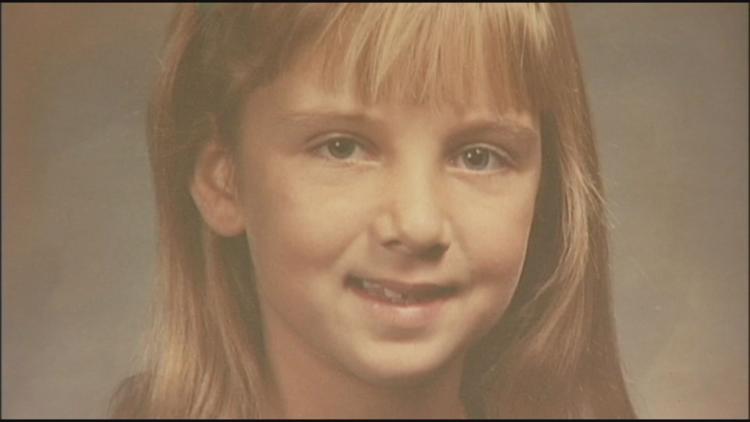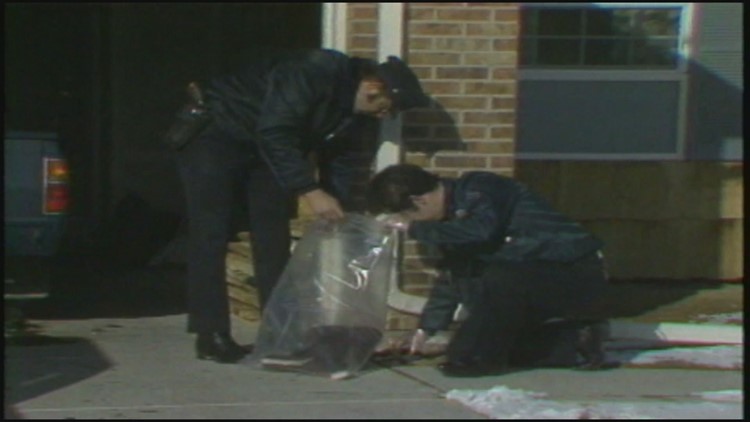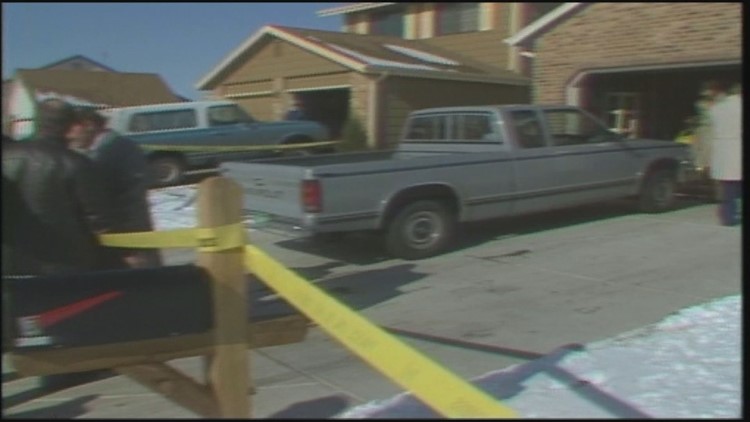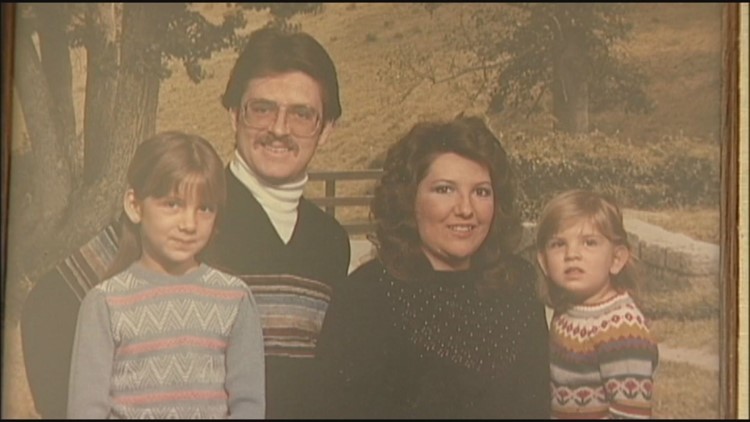Early on a Friday morning in January 1984, Roy Williams was jolted out of a sound sleep when a rock the size of a football smashed into him, hurled by a shadowy figure in the darkness.
“He threw the rock – ka-bam,” Williams said outside the Kingman, Arizona home where he was attacked. “It was completely dark, so I didn't see a silhouette or anything, you know? Just a voice.”
Seven months later, and 90 miles away, Nancy Barry were getting ready to retire for the night when a man with a pick ax handle slipped into the home she shared with her husband in Henderson, Nevada.
“I saw the club in his hand and I just freaked out and jumped and ran to the bedroom,” Nancy Barry said. “He starts pounding away, and I'm yelling, stop, stop – and then I realize at one point, you know, I'm telling myself, just be quiet, play dead, you know?”
Both attacks were unprovoked, unexplained and shocking.
The man blamed for them, Alex Christopher Ewing, was ultimately sentenced to 110 years behind bars. And that might have been the end of the story for these victims – and others who crossed his path – were it not for the 2018 discovery of a DNA match linking Ewing to two long-cold murder cases in Colorado: The Jan. 10, 1984, rape and murder of Patricia Louise Smith in Lakewood and the killings six days later of Bruce and Debra Bennett and their 7-year-old daughter, Melissa, in Aurora. Another daughter, 3-year-old Vanessa, was savagely beaten but survived.
RELATED: She was the sole survivor of one of Colorado's most brutal crimes. Now, she's telling her story
Ewing, now 59, remains behind bars in Nevada, fighting his extradition to Colorado to face charges in the Smith and Bennett murders.
Since the Bennett murders, Ewing has been free for a total of 13 days – all of them in 1984 – and 9Wants to Know set out to retrace his steps and learn more about the other crimes he was implicated in after the killings in Colorado.
File photos of the Bennett family murders
1984
Kingman sits at the intersection of Interstate 40, which cuts across central Arizona, and U.S. 93, which traverses from Phoenix to Las Vegas. At the intersection of those two highways sits a truck stop, and it was there on the evening of Jan. 26, 1984, that Ewing was first seen in Kingman, according to court documents.
At the truck stop, a manager saw three or four hitchhikers loitering and asked them to leave. He later identified Ewing from a photograph as one of them.
Early the next morning – court documents show it was roughly 12:05 a.m. – Williams was attacked. At first, Williams didn’t know he suffered a broken rib – or a gash in his head that would require 85 stitches to close.
“I said, 'what did you do that for?' as calm as I could say it,” Williams said.
In the gloom, he said he caught only some of his attacker’s words.
“'Are you guys turning me into the police,' or something like that” Williams recalled. “But he said it very quietly, and then he started talking a little bit more, and got more and more quiet the more he talked, so I couldn’t really follow what he was saying.”
And then the man was gone, disappearing into the desert behind Williams’ home. The best clue responding police officers had, according to documents, were footprints in the dirt outside.
Around 7 a.m. the next morning, a Kingman police officer stopped a man on a highway on-ramp and asked to see the soles of his shoes. Believing the pattern on the man’s shoes matched the prints outside Williams’ home, the officer asked him to come to the police station to answer some questions.
The man ran, leading officers on a 30-minute chase into Clacks Canyon – a winding, rocky slit cutting north from the old part of town. According to documents, officers found Ewing hiding beneath a bush.
His arrest was front-page news in the local Mohave Daily Miner that afternoon – “Colorado man charged with attempted murder,” the headline read.
It was 11 days after the murders of three members of the Bennett family.
When he was questioned, Ewing claimed he’d hitchhiked to Arizona from Colorado, riding into town on a Coors truck driven by a man who went by the handle “Polecat” on the CB radio.
Over the next seven months, Ewing’s case was delayed repeatedly. He succeeded in getting one attorney removed and wrote multiple jailhouse motions bemoaning the passed of time with no resolution to his case.
It was hard time to be in the Mohave County Jail. It was overcrowded, and inmates were routinely held in other jails. Sometime in July 1984, according to documents, Ewing was transferred to a jail in St. George, Utah, a five-hour drive away.
On Aug. 9, 1984, Ewing was among about a dozen prisoners being returned to Kingman for court hearings. The two deputies transporting the prisoners stopped at a gas station in Henderson to give the inmates a bathroom break. The inmates had to be uncuffed and unshackled, and after they were, Ewing bolted, running to a nearby Kmart, where he apparently ditched his orange jail jumpsuit and fled wearing a pair of red shorts and tennis shoes.
Hours later, Nancy Barry was ready to climb into bed when she heard her infant son make a noise.
She headed to the kitchen to get a bottle. That’s when she saw Ewing standing inside her back door. He chased her back to her bedroom, she told 9Wants to Know, beating her husband, Chris, and her.
At one point, she got her hands on the ax handle.
“I remember touching it, and then I remember going like this,” she said, moving as though she was backing away. “And the next thing I remember is I've got the phone in my hand and I'm dialing zero.”
Moments later, a phone operator called police, according to a recording obtained by 9Wants to Know: “This is the operator … I just had a call … with a woman screaming in the background, just, bad, and it sounded like someone was beating her. You could hear like fists or something hitting.”
Ewing fled into the night.
Jutta Chambers, then a rookie police officer in Henderson, never forgot the scene at the couple’s home when she got there.
It was obvious that Chris Barry was the most seriously hurt of the two.
“He was wearing white underwear, and they had – the blood had just soaked all the way through the underwear,” Chambers said. “And he was crawling through the closet trying to get away because he thought that the suspect was still there.”
He would suffer permanent injuries.
“He was long-term affected,” Nancy Barry said of her husband, who died of cancer in 2011. “He lost his sense of smell. His jaw was … out of alignment, so his bite was all messed up. He Couldn't taste food anymore. His eye kind of was set back in his head. And then scarring.”
She suffered fractures to both hands – she tried to cover her head to fend off blows from the ax handle – as well as a head injury that required surgery.
Their two children were unharmed.
Police immediately suspected Ewing.
Over the next two days, Mike Meyer, a ranger with the National Park Service, was among those who had searched for Ewing at Lake Mead, located over a ridge east of town.
On Aug. 11 Meyer and other rangers got a report that Ewing had made a collect phone call from a marina at the lake. The operator who placed the call heard Ewing say, “I’ve escaped – come get me,” and then called authorities.
“I have to say we were not expecting to see anything, you know?” Meyer said. “And as, as we arrived there is Ewing.”
Ewing ran. Meyer chased him over a small rise and ultimately cornered him against the water’s edge. There, Meyer ordered Ewing down to the ground twice.
“He doesn't do anything,” Meyer said. “So the third time, I yell out, ‘You're not hearing me – I'll shoot you.’”
Ewing surrendered.
It had been two days since his escape – to date, the last two days of freedom Ewing would experience.
Legal battle
Ewing went on trial in early 1985 for the beating of Nancy and Chris Barry.
“Most criminal cases are plea-bargained,” said Marty Keach, the prosecutor who handled the case. “Well, this was one as soon as I got it I said, 'we're not plea bargaining this case.' I said 'that’s going to trial and this guy's going to jail.'”
In Keach’s mind, it was simple: The attack on the couple was so vicious it was shocking they both didn’t die.
“This guy was cold-blooded,” Keach said. “I mean this was a senseless, unprovoked beating to what he thought was death – he thought he just killed two people and had no problem with it.”
The jury convicted Ewing of two counts of attempted murder, burglary and escape. That’s when the 110-year sentence was handed down.
Once it was clear that Ewing was going to spend decades in prison, prosecutors in Kingman dropped the charges there for the attack on Williams.
“I just assumed at the time that he's just another crazy guy on crystal meth, you know?” Williams said.
As time passed, the victims healed and the police officer, prosecutor and park ranger moved on. But none of them ever forgot Alex Christopher Ewing.
“Looking back on 30 years of law enforcement and probably having arrested, in those situations, probably 200 or 300 people in a similar type of deal, I've never seen anybody have a flatter emotion,” Meyer said. “There was no emotion.”
“I think he's the first person that I personally believed just to be kind of evil,” Chambers said. “I interacted with a lot of people through the years that are bad people and make bad decisions and, and hurt people.
“But just to do it purely for fun, or whatever it was that he got out of it, he is the only one that I had that kind of interaction with.”
And then came the news in August 2018 that DNA had tied Ewing to the Smith and Bennett murders.
After hearing that news – and reading stories about the discovery of the link – Nancy Barry’s mind turned to the families of the Colorado victims, and to the long wait for a suspect to be identified in those cases.
“I thought about all those families, and how traumatic that was for them, and that that could have been us,” she said. “I know where he is. I can't imagine – that's my thoughts – I can't imagine the devastation those families have gone through, and how they've been haunted all these years.”
Contact 9NEWS reporter Kevin Vaughan with tips about this or any story: kevin.vaughan@9news.com or 303-871-1862.
More
The story of the Colorado assaults, the search for a killer, and the anxiety that gripped the survivors and altered life in the Denver metro area is the subject of “BLAME: The Fear All These Years,” a 9Wants to Know investigative podcast.
>> Listen to part 1 of The Fear All These Years below
Subscribe and listen
“BLAME: The Fear All These Years” is available at Apple Podcasts or your favorite podcast app.
SUGGESTED VIDEOS | 1984 Hammer Murders









